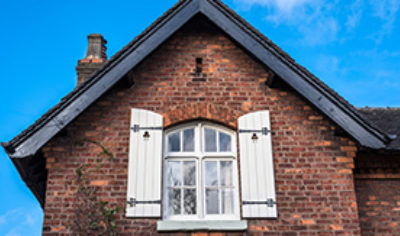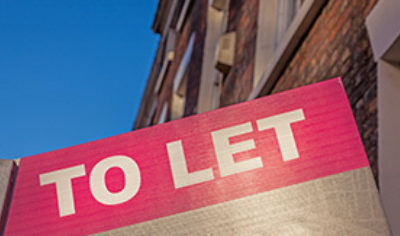Policy Exclusions & Restrictions- Whats Covered. If you are looking for cheaper content and home insurance it’s important you understand how most UK home insurance policies are structured and organised. If you buy a contents policy to protect your possessions, without bothering to check how your belongings are valued, you may find yourself under insured in the event of an insurance claim. Many first-time buyers get confused between contents insurance and home and building insurance and the different basis upon which covers are available. Most people will buy a combined buildings and contents policy, which saves them the hassle and time of shopping around for separate policies and may entitle them to a discount as they are taking both buildings and contents at the same time. Many people are still insuring their home buildings via their lender as they believe they have to, whilst this was the case many years ago, most lenders will now allow you to insure your home buildings, elsewhere, providing of course the policy wording meets the council for mortgage lenders hand book conditions. You lender will also want their name added to the schedule of insurance and be kept informed of any serious home insurance claims under the policy.
Read the Policy Wordings – so whether you are comparing contents and home insurance policies online, or discussing your individual needs face to face with your local insurance broker, be sure to understand the basis upon which your household items will be valued. Likewise you should make an effort to understand the types of risks that may be included or specifically excluded from the policy. Remember buying the cheapest policy may be a false economy, if when you need to make a claim, you find you are not adequately covered. Contents cover purchased together with buildings insurance from the same insurer may possibly be a better way to insure your home. It means that in the event of a claim you will be dealing with the same company (if it happened that both contents and buildings were damaged in a major disaster scenario such as flood, fire or even burglary). However by shopping around, you can sometimes get deals that are using different insurance companies for contents and buildings. It does not always follow that if a company is competitive for contents it will be for buildings as well.
Buildings Cover for Your Home – the buildings aspect of your combined content and home insurance policy it’s designed to protect the physical fabric and permanent structure of your home. Structure is usually defined as the walls, doors, roof, plumbing, wiring, insulation and any permanent fixtures & fittings. Also included in this definition are: Walls, gates, fences, drives & patios. Many policyholders get confused by what constitutes a fixture or fitting. Most insurance companies define them as either fitted bathrooms or kitchen units or other items that are affixed to a building in such a way that they would pass with the builder to the new owner in the event of a sale. One grey area is carpets, to be on the safe side, carpets should be insured under your contents insurance section. Most people take out buildings insurance as a conditional demand of their mortgage provider and accept it as a necessary and vital outgoing annual household expense.
What is Building Sum Insured? – When completing an application form you will be asked for a buildings sum insured value. This figure must be at least the value of the actual ‘rebuilding cost’, in the event of a major catastrophe, a sufficient sum to totally reinstate the property including all the additional costs site as site clearance and architects and surveyors fees. Many people struggle to know what their actual rebuilding cost is – particularly because inflation increases construction costs over time. Most policies are index linked, this will increase the sum insured each year, however no amount of index linking will keep your sum insured adequate if the original sum was incorrect in the first place. So it is vital you check with a qualified surveyor what the latest rebuilding cost is, to avoid your property from being underinsured. If you declare the building sum insured at an incorrectly lower amount, any future claim may be reduced. For some lucky homeowners who do not have a mortgage, most would agree that not protecting their home with insurance is a risk simply not worth taking. If you have a new mortgage, you may find that you lenders surveyor has included an up to date rebuilding cost in his survey report.
Contents Cover for Your Possessions – the contents aspect of a combined contents and home insurance policy is designed to protect your personal belongings at your home. You can optionally extend this protection for your valuable items when you are away from your home (such as mobile telephones, jewellery, cameras and other items of intrinsic value). Contents insurance means insuring possessions in a home against ‘insurable perils’. Those insurable perils are such things as fire, flood, earthquake, land-heave or subsidence, impact, theft, malicious damage by third parties, or accidental damage. Contents are generally those possessions that you can readily remove from your own home. In other words they are not fixed in to the fabric of the building. Contents are such things as Televisions, computers, clothes, rugs, carpets (if the carpets could be removed), furnishings, jewellery, works of art, contents of a garage or outbuilding such as bicycles, frozen food, etc.
Types of Contents Cover – some insurance policies are designed on a ‘bedroom rating’ basis for people with few valuable possessions to insure. However most contents wordings are designed on a ‘new for old basis’ which uses a ‘sum insured’ basis. This means any insurance claim will be settled by replacing damaged, lost or stolen item with an equivalent new item. Most people don’t realise that contents refers not just things they love (such as family heirlooms) or to expensive gadgets (such as flat screen TV or laptop) but also to the more boring items (such as carpets and curtains). To make an accurate prediction of the amount of contents sum insured required, simply walk round each room of your home, make a list of all the items that are not ‘nailed down’. Then assume your home has just burned down and work out what it will cost to go out to the shops and replace all of the items on your list.
Under Insurance – if you want a cheaper contents and home insurance quote and are considering reducing the amount of contents cover on a policy – think again. There is a danger that you will be under insured. Some insurers may apply what is termed “average”, meaning that if you only insure 50% of your contents by value, then you will only get 50% back in value after a valid insurance claim, irrespective of the amount destroyed. The insurance company will justify this practice because they will not have received the full premium for the risk that they were actually providing cover for. As many insurers use postcode ratings linked to burglary rates and property prices, insurers argue they need the full premium to cover the costs of specific risks in specific areas.
Basis of Cover– many insurers will provide a blanket basis of cover. For example they may offer £50,000 of contents cover as standard. The customer must decide if that is sufficient or not. Within that overall amount there are limits to certain categories of contents (such as works of art, or precious items or what is called ‘high risk items’). High risk items are such things as electrical goods, jewellery, stamp collections, laptops and computers. The list is not exhaustive and different insurers will have varying definitions for this
category. In addition different excesses will apply to contents cover, and you can reduce your premium by increasing the level of excess you are prepared to pay in the event of a claim. In this way, you know it is not worth submitting a small claim (keep the insurance claims processing costs down). Hence the insurer is able to offer a discount in exchange for customer accepting a higher excess. No claims discounts are also often offered by companies to customers who have not had a claim in a number of years, as they are regarded as better “risks”.
Possessions Away From Home – there are possessions ‘away from the home’ options (such as watches, jewellery, spectacles and sports equipment), that home owners can insure. These have a different ‘rating’ applied to them by the insurance company. A customer will sometimes have a set amount within a policy anyway. For example up to £3,000 worth of cover. Then within that amount there will be a ‘single article limit’ of £1000 for example. If a customer has one article that they often take out of the home, (that is worth more than £1000 in our example), then this amount of cover would not be sufficient. The customer should therefore specify this content item on the policy giving exact make and model details. Insurance companies would generally pay a valid claim up to the amount of cover within the policy for possessions away from the home, (even if the item lost was slightly over the limit). However it would only be for the amount covered i.e. in this example £1000 (even if item lost was valued at £1200).
Optional Contents Extras – additional policy options can be added to provide extra peace of mind. Freezer cover covers the contents of a freezer if it were to break down or there was a power cut. Also bicycles can be covered separately away from the home (view our bicycle insurance and electric bike insurance services here). So whilst they are covered within the boundaries of the home (including the garden) they will not be covered away from the home without additionally specifying them. So for example, if the bike was stolen from the garage, they are likely to be covered, but if it was stolen outside a shop, without the additional cover, they would not be covered. As always terms will apply to a whole plethora of practical scenarios in the Policy Wording, (such as adequate security applied at the time, i.e. was the garage locked or were the bikes padlocked when outside the shop). Different insurance policies will vary the physical security that require from home owners before a claim is paid out. Lastly garden covers plants and shrubs, garden ornaments and furniture. Some contents policies will have a set amount, but if a customer requires more than this, some insurance companies will allow you to purchase more cover for goods in the open. Things such as fences and walls are categorised as buildings and do not form part of contents cover.
Accidental Damage – lastly ‘Standard Contents’ cover is generally cheaper than contents cover with ‘additional accidental damage’. Accidental damage covers the customer against common accidents occurring to their possessions in the home (such as spilling wine on a carpet). Standard cover does sometimes give an element of accidental damage cover for electrical items. So think carefully about whether full accidental damage cover is really required and remember to check the small print!. If you have children, full accidental damage cover would seem jolly sensible.
At Assetsure we can provide a contents and home insurance quote in minutes to suit your needs. Please feel free to call us on the telephone number above or click ‘get a quote’ above.
For a Home Insurance Quote contact Assetsure. We are able to offer insurance for a wide range of Uk property types including nonstandard construction.
























